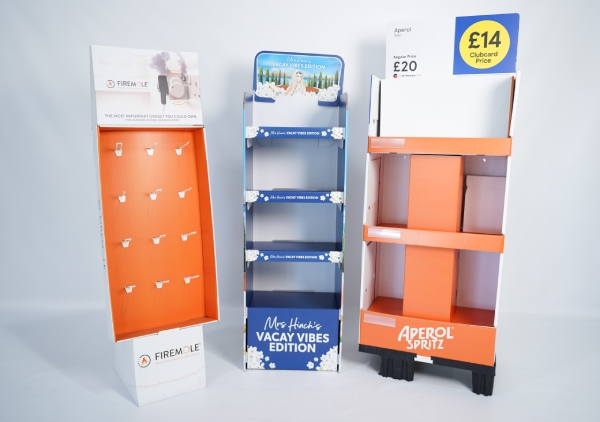Point of purchase or POP is the place where customers decide they want to make a purchase. It's a term used by retailers to describe a key part of a customer's retail journey and is something that's taken into account in terms of marketing and placement of products and displays that will attract attention and encourage a sale.
This post looks at POP, what a POP display is, the different types and the benefits of customising them.What is the Point of Purchase?
When you decide you want to buy a pair of jeans, the point of purchase is some kind of retail store. Within that store, there will be different aisles selling a range of products and the POP is the in-store interaction between a shopper and the product. At this stage, they are considering the product and deciding which one they want to buy. Their decision is likely to be influenced and helped by things like shelf facings, promotional material and POP displays which provide information about the product. In the case of a pair of jeans, that would probably be the price, sizing and fit. Point of purchase advertising and marketing campaigns are therefore designed to help influence the shopper's decision and encourage them to buy.
What is a Point-of-Purchase display?
As mentioned above, the POP is where a customer decides to make a purchase which can be either in the aisles or floor of a shop or store. Most stores will have a POP marketing strategy to encourage shoppers to make the decision to buy which includes shelf facings and POP displays. A well-designed POP display serves to catch the eye of customers, provide them with all of the information they need about the product and encourage them to decide to buy by putting it into their basket. It can also provide facts and information about the product as well as details about special offers or discounts that may be available, helping it to stand out from the other items, increase the number of facings and presence in the store and encourage customers to decide they want to buy.What are the types of Point-of-Purchase displays?
Point-of-purchase displays are an extremely effective marketing tool when it comes to encouraging customers to buy products. The main types of displays which have varying levels of permanence are:- Temporary: These are usually made from inexpensive materials and created for a specific promotion or discount offer. They're not necessarily built to last as won’t be around for long.
- Semi-permanent These types of displays will typically be made from higher-quality materials, and are designed to last more than a few weeks for longer-term promotions.
- Permanent Permanent POP displays are a much larger investment and are used as part of a long-term marketing strategy.
What’s the best type of POP display?
Hanging signs and signs in general tend to be the most powerful form of POP display in retail. In fact, displays with signs outperformed those without signs by 20%. According to Point of Purchase Advertising International, in-store purchases increase by as much as 90% when effective POP displays are used.
